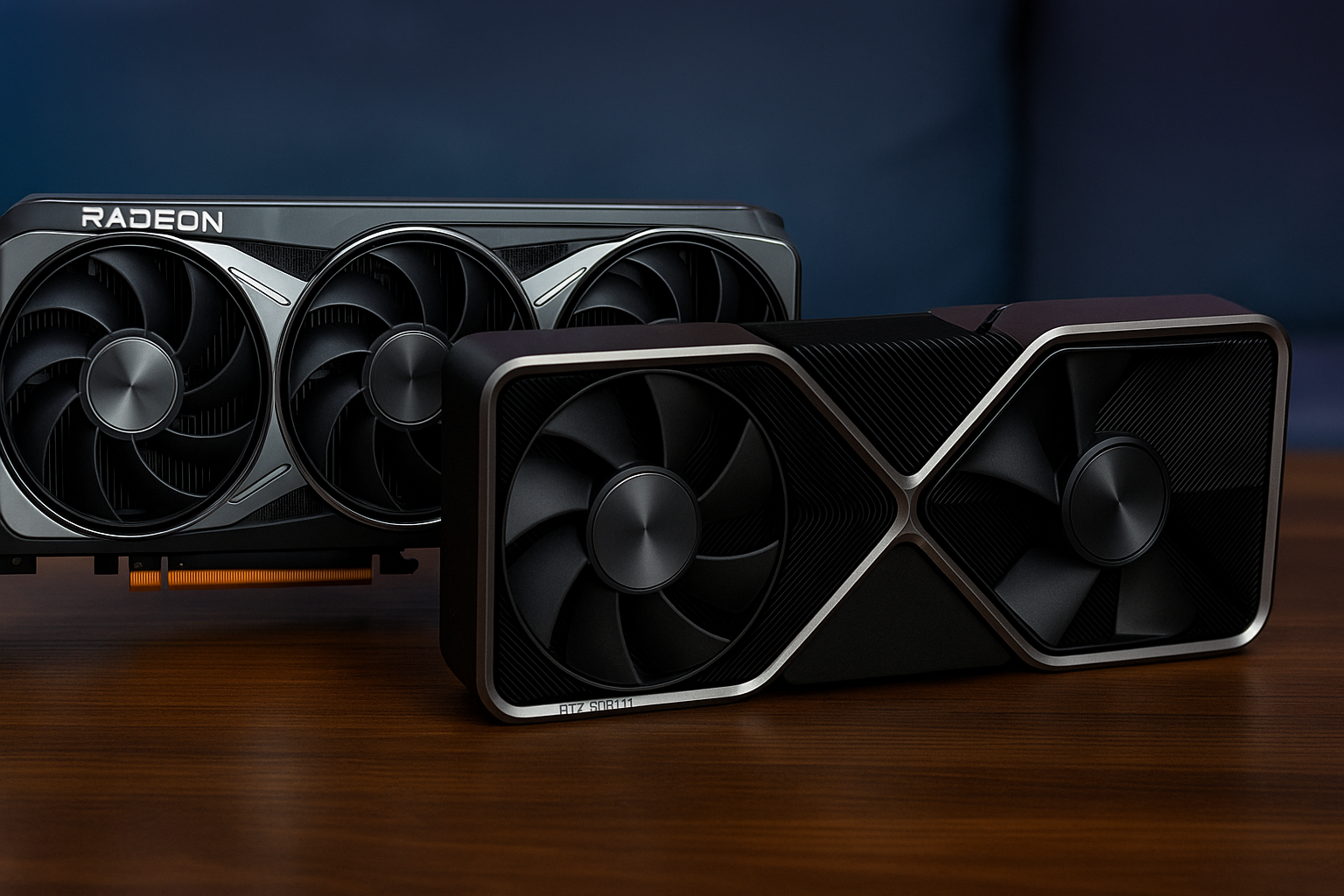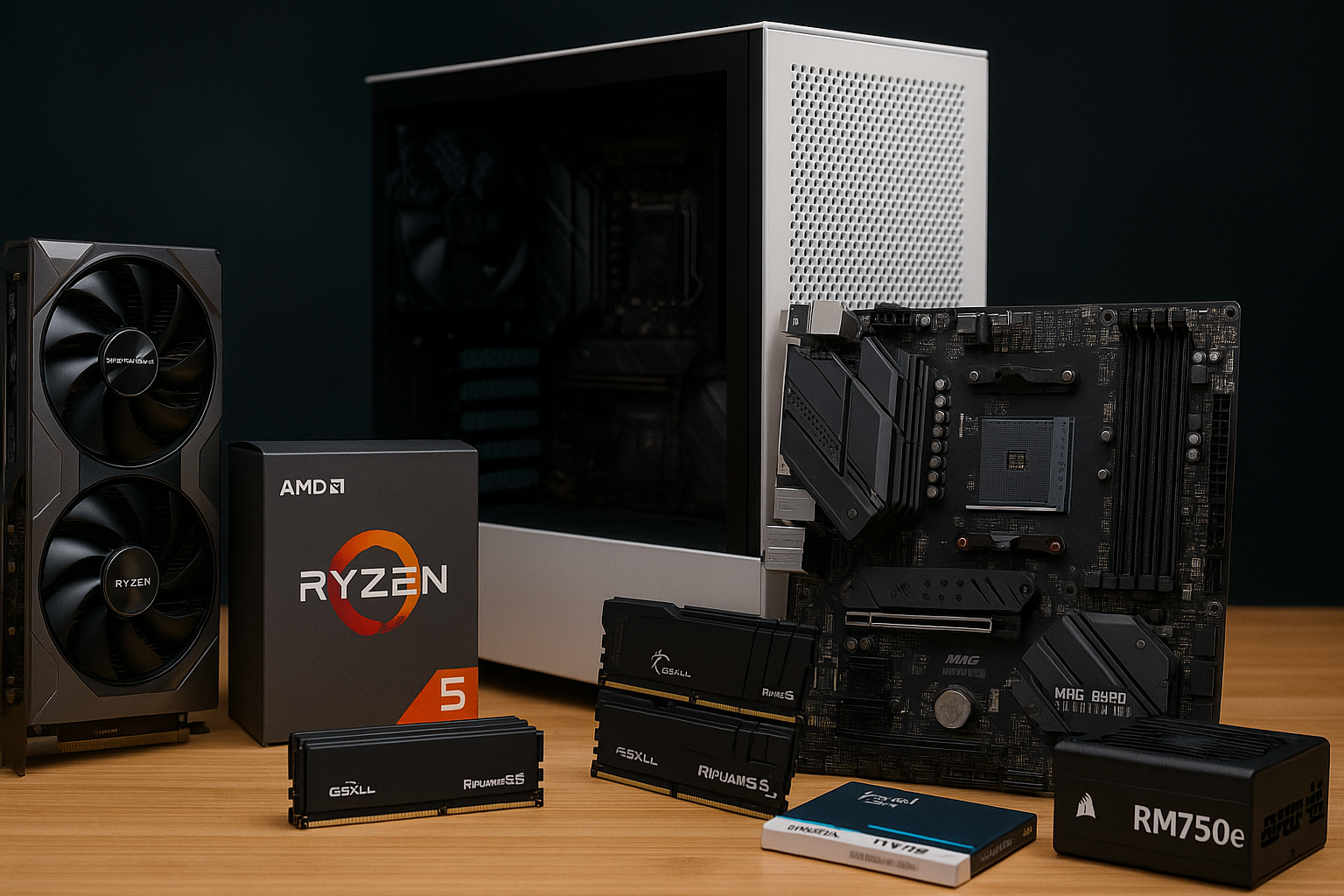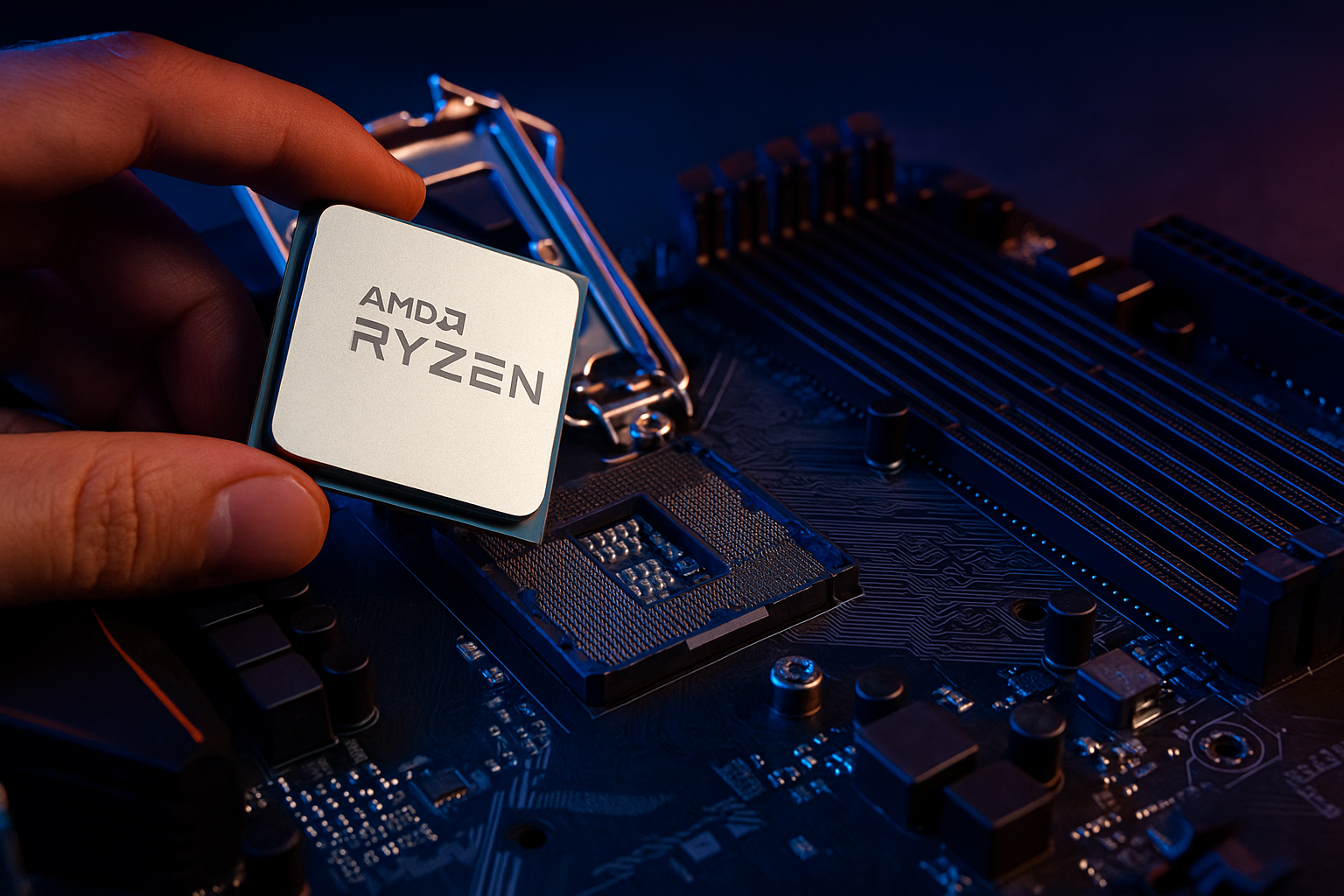![Best Graphics Cards & GPUs for Valorant 2025 [Budget to High-End]](https://cdn.sanity.io/images/roisunrd/production/624c85ce697fa8e1ade119e506d812023db488f3-1536x1024.png)
Best Graphics Cards & GPUs for Valorant 2025 [Budget to High-End]
By: pcbuildhelper Editorial Team | Updated: 9/19/2025
Valorant may lean on the CPU, but your GPU still plays a pivotal role—especially when you're pushing 144 Hz, 240 Hz, or even 360 Hz monitors. In competitive shooters, every frame counts. Smooth frame pacing, low latency, and consistent high-FPS output aren’t just nice to have—they’re essential for tracking targets, reacting faster, and staying competitive. As of 2025, NVIDIA’s RTX 50‑series and AMD’s RX 9000‑series GPUs offer a wide range of powerful, feature-rich options that scale with your performance needs and budget—whether you're grinding ranked or streaming to a global audience.
Why GPU Still Matters in Valorant
While Valorant is known for being CPU-optimized, your GPU still plays a critical role in delivering a responsive, competitive experience—especially at high refresh rates.
- Smooth frame pacing reduces input lag, helping your actions feel more immediate and accurate.
- High refresh rate monitors (144 Hz, 240 Hz, 360 Hz) demand consistent FPS output, which only a capable GPU can sustain.
- Streaming performance depends on GPU encoding quality, making cards with AV1 or NVENC essential for content creators.
- Modern technologies like NVIDIA Reflex 2, DLSS 4, and AMD FSR 4 enhance responsiveness, improve frame stability, and extend FPS headroom for ultra-smooth play.
Whether you’re aiming for rank ascension or running a competitive stream, your graphics card is still a decisive factor in 2025.
Best Graphics Cards for Valorant (2025)
Best All-Around GPU for Competitive Valorant
NVIDIA RTX 5070 Ti (16 GB)
The RTX 5070 Ti nails the sweet spot for high-refresh-rate gaming at 1080p. It effortlessly hits 240 FPS and can flirt with 360 FPS when paired with DLSS 4 and Multi-Frame Generation. With Reflex 2 onboard, latency stays under 25 ms—ideal for competitive shooters like Valorant.
- Why It’s Great: Pro-level performance with elite responsiveness, without going full flagship.
- Ideal For: Competitive players with 240–360 Hz monitors who also stream or record.
Pros:
- Reflex 2 for ultra-low latency
- DLSS 4 + Multi-Frame Generation
- Easily sustains 240 Hz at 1080p
- Efficient and well-balanced for streaming
Cons:
- Prices can exceed MSRP
- 16 GB VRAM may feel tight in future AAA titles
Best Value for High FPS at 1080p/1440p
AMD Radeon RX 9070 XT (16 GB)
The RX 9070 XT offers flagship-tier raster performance at a mid-tier price, often outperforming its NVIDIA counterparts in raw FPS. It regularly delivers 240–300 FPS at 1080p and is very capable at 1440p, making it one of the best value picks for Valorant.
- Why It’s Great: Fantastic performance-per-dollar for players who don’t need Reflex or DLSS.
- Ideal For: High-FPS gamers who prioritize raw performance over proprietary features.
Pros:
- Outstanding FPS for the price
- Strong 1080p and 1440p capabilities
- FSR 4 support for wider performance tuning
- Lower cost than competing NVIDIA options
Cons:
- No Reflex or DLSS
- Slightly higher input latency for serious pros
- AMD encoder quality still trails NVIDIA’s NVENC
Ultimate GPU for Valorant, Streaming, and Future proofing
NVIDIA RTX 5090 (32 GB)
The RTX 5090 is absolute overkill for Valorant, but for pros, streamers, or creators running 360 Hz monitors—or building multi-purpose content rigs—it’s unmatched. Expect 800+ FPS in esports titles and the lowest latency NVIDIA has ever delivered.
- Why It’s Great: No compromise performance for elite players, creators, or dual-use systems.
- Ideal For: Top-tier competitors, streamers, or users building a futureproof workstation.
Pros:
- Exceeds 360 Hz easily, even in tournaments
- Reflex 2 and DLSS 4 support
- Massive 32 GB VRAM for heavy workloads
- Best-in-class streaming and encoding
Cons:
- Extremely expensive (~$2,000+)
- High power draw and cooling demands
- Overkill for most Valorant-only builds
Best Budget GPUs for Valorant (2025)
Budget doesn’t have to mean compromise—especially in a game as well-optimized as Valorant. If you’re gaming on a 1080p monitor and targeting 144 Hz or even dipping into 240 Hz territory, these cards offer incredible value without sacrificing core performance.
Best Budget GPU with Reflex and DLSS 4
NVIDIA RTX 5060 Ti (16 GB)
The RTX 5060 Ti is the most affordable entry into NVIDIA’s RTX 50-series ecosystem, bringing premium features like DLSS 4 and Multi-Frame Generation (MFG) to budget-conscious builds. At 1080p, it easily pushes 144 FPS in Valorant and can get close to 240 FPS when upscaling is enabled.
- Why It’s Great: Delivers competitive FPS with low latency and modern feature support at a reasonable price.
- Ideal For: Casual competitive players, budget streamers, and entry-level 240 Hz setups.
Pros:
- DLSS 4 + MFG provide futureproof performance boosts
- Reflex 2 support for low-latency responsiveness
- Excellent 1080p performance for the price
- Efficient power usage for small or quiet builds
Cons:
- Not ideal for 1440p gaming or multitasking-heavy streaming
- Performance dips without upscaling in demanding titles
Best AMD Budget GPU for Raw FPS
AMD Radeon RX 9060 XT (16 GB)
If you're aiming for the best raw framerate at the lowest price, the RX 9060 XT is a top contender. It delivers 200+ FPS in Valorant at 1080p without relying on upscaling or AI-based enhancements. While it lacks NVIDIA’s Reflex and DLSS, it still supports FSR 4 in compatible games.
- Why It’s Great: Excellent native performance with high VRAM headroom for future titles.
- Ideal For: Budget builders focused on native FPS over feature sets, especially at 1080p 144 Hz.
Pros:
- Great price-to-performance ratio
- 16 GB VRAM supports modern game textures and multitasking
- Delivers 144 Hz+ reliably at 1080p
- Low power draw and thermals
Cons:
- No Reflex means slightly higher latency
- AMD encoder is weaker for streaming
- FSR support less consistent across titles vs DLSS
Recommended GPUs for Competitive & Streaming Players
- RTX 5070 Ti: Best balance of FPS, low latency, and NVENC encoder quality.
- RTX 5090: Overkill for Valorant alone but perfect for 360 Hz streaming setups or dual-PC alternatives.
- RTX 5060 Ti: Budget-friendly for casual streaming with DLSS 4 and Reflex.
- RX 9070 XT: Works for streaming, but AMD encoders lag behind Nvidia in quality.
NVIDIA vs AMD GPUs for Valorant – Which Should You Choose?
- Both NVIDIA and AMD offer excellent GPUs for Valorant in 2025, but they cater to different needs. Whether you’re focused on competitive edge, streaming quality, or value-driven performance, each brand has strengths and trade-offs that are worth considering.
NVIDIA – Performance, Latency, and Streaming Power
Advantages:
- Reflex 2 Technology:
NVIDIA’s Reflex 2 delivers the lowest end-to-end system latency currently possible, making it the preferred choice for competitive Valorant players. Sub-25 ms response times give a real advantage in flick shots and fast engagements. - DLSS 4 + Multi-Frame Generation:
These technologies boost FPS beyond what’s possible with traditional rendering. DLSS 4 also improves motion clarity at high refresh rates, which is crucial for tracking targets in fast-paced matches. - Superior NVENC Encoder (with AV1):
Streaming or recording Valorant? NVIDIA’s dedicated NVENC encoder offers exceptional quality with minimal performance loss. The addition of AV1 encoding in RTX 50-series cards means cleaner, more efficient video at lower bitrates—ideal for Twitch or YouTube creators. - High Refresh Stability:
NVIDIA cards excel at maintaining consistent frame delivery at 240 Hz and 360 Hz, especially when Reflex and DLSS are enabled together.
Drawbacks:
- Premium Pricing:
Across most tiers, NVIDIA cards come at a higher MSRP—and they’re often marked up even further due to demand. - Power Consumption:
Flagship models like the RTX 5090 draw substantial power and may require upgraded cooling or power supplies in compact builds.
AMD – Best for Value and Raw FPS
Advantages:
- Price-to-Performance Leadership:
Cards like the RX 9070 XT and RX 9060 XT deliver excellent FPS for the price, often beating NVIDIA’s offerings in raw rasterization performance at 1080p and 1440p. - Strong Esports Rasterization:
In well-optimized titles like Valorant, AMD’s GPUs provide consistently high framerates without relying heavily on upscaling technologies. - FSR 4 Support:
AMD’s answer to DLSS, FSR 4 improves performance in supported games. It’s open-source and hardware-agnostic, though not yet as widely optimized as DLSS 4.
Drawbacks:
- Higher Input Latency:
Without an equivalent to Reflex, AMD cards tend to deliver slightly higher input latency, especially at the competitive level. This may not affect casual players but can be noticeable in 240 Hz+ environments. - Inferior Streaming Quality:
AMD's encoders—while improved—still lag behind NVIDIA’s NVENC in both quality and efficiency, particularly at lower bitrates common on Twitch. - Maturing Frame Generation:
AMD’s frame generation via FSR 4.1 and Fluid Motion Frames is improving but still trails DLSS 4 in image stability, responsiveness, and compatibility across titles.
Who Should Choose What?
- Choose NVIDIA if you:
- Play at 240–360 Hz and need the absolute lowest latency
- Stream or record gameplay regularly
- Want cutting-edge features like Reflex, DLSS 4, and AV1 encoding
- Choose AMD if you:
- Prioritize raw FPS-per-dollar
- Play primarily at 1080p/1440p without latency-sensitive needs
- Want strong native performance without relying on upscaling
Final Verdict
- For pure 1080p competitive play (144–240 Hz):
- NVIDIA RTX 5070 Ti is the best all‑around option.
- AMD RX 9070 XT is the best value if you can live without Reflex.
- For budget 144 Hz or entry‑level 240 Hz:
- NVIDIA RTX 5060 Ti gets you Reflex and DLSS 4.
- AMD RX 9060 XT gives reliable 200+ FPS for less money.
- For streaming and 360 Hz elite setups:
- RTX 5070 Ti handles most use cases.
- RTX 5090 is for extreme FPS and future‑proof content creation rigs.
By mid-2025, both NVIDIA’s RTX 50‑series and AMD’s RX 9000‑series GPUs can deliver professional-grade performance in Valorant. Your choice ultimately depends on priorities: NVIDIA leads in latency, streaming quality, and advanced features, while AMD excels in raw FPS-per-dollar and value at every tier.
FAQs
What is the best budget GPU for Valorant in 2025?
The RTX 5060 Ti and RX 9060 XT both deliver 144 Hz+ performance at 1080p, making them the top budget picks for smooth Valorant gameplay.
Do I need an expensive GPU to play Valorant at 240 Hz or higher?
No, cards like the RTX 5070 Ti can handle 240–300 FPS affordably, while the RTX 5090 is only needed for extreme 360 Hz setups or streaming rigs.
Editorial Team
Every guide on pcbuildhelper is created by our editorial team of experienced PC builders, gamers, and engineers. We combine hands-on testing, community insights, and trusted industry data to make sure our recommendations are practical, accurate, and up to date. While we use AI to assist with research and formatting, all final content is reviewed and validated by our human team to ensure clarity and trustworthiness.
Related Articles

RTX 5070 Ti vs RX 9070 XT (2025) – Best GPU for 1440p, 4K & Esports
Compare RTX 5070 Ti vs RX 9070 XT in 2025. Benchmarks, FPS, pricing, and features to find the best GPU for 1440p, 4K gaming, ray tracing, and esports.
9/19/2025

Best Gaming Keyboards & Mice for Valorant in 2025 – Precision, Speed & Pro Picks
What mouse and keyboard do Valorant pros use in 2025? Explore the best lightweight FPS mice, ultra-fast Hall effect and optical keyboards, and wired vs wireless options trusted by competitive players.
8/30/2025

Best 1440p Gaming PC Build 2025 – Smooth 100+ FPS Performance Without Breaking the Bank
Looking for the best 1440p gaming PC build in 2025? This mid-range guide shows you the ideal CPU, GPU, and components to hit over 100 FPS at ultra settings—delivering high-end visuals at a reasonable cost.
8/30/2025

Best $2000 Gaming PC Build (2025) – 4K Ultra & High-End Performance
Discover the ultimate $2000 gaming PC build for 2025 featuring the RTX 5080 and Ryzen 9 9900X—perfect for 4K Ultra gaming, streaming, content creation, and next-gen performance.
11/22/2025

Best AMD Processors for Gaming in 2025 (Ranked by Price/Performance)
Discover the top AMD gaming CPUs of 2025—ranked by price-to-performance. Whether you're budget-conscious or aiming for premium gameplay, get insights, specs, and recommendations for every tier.
8/22/2025